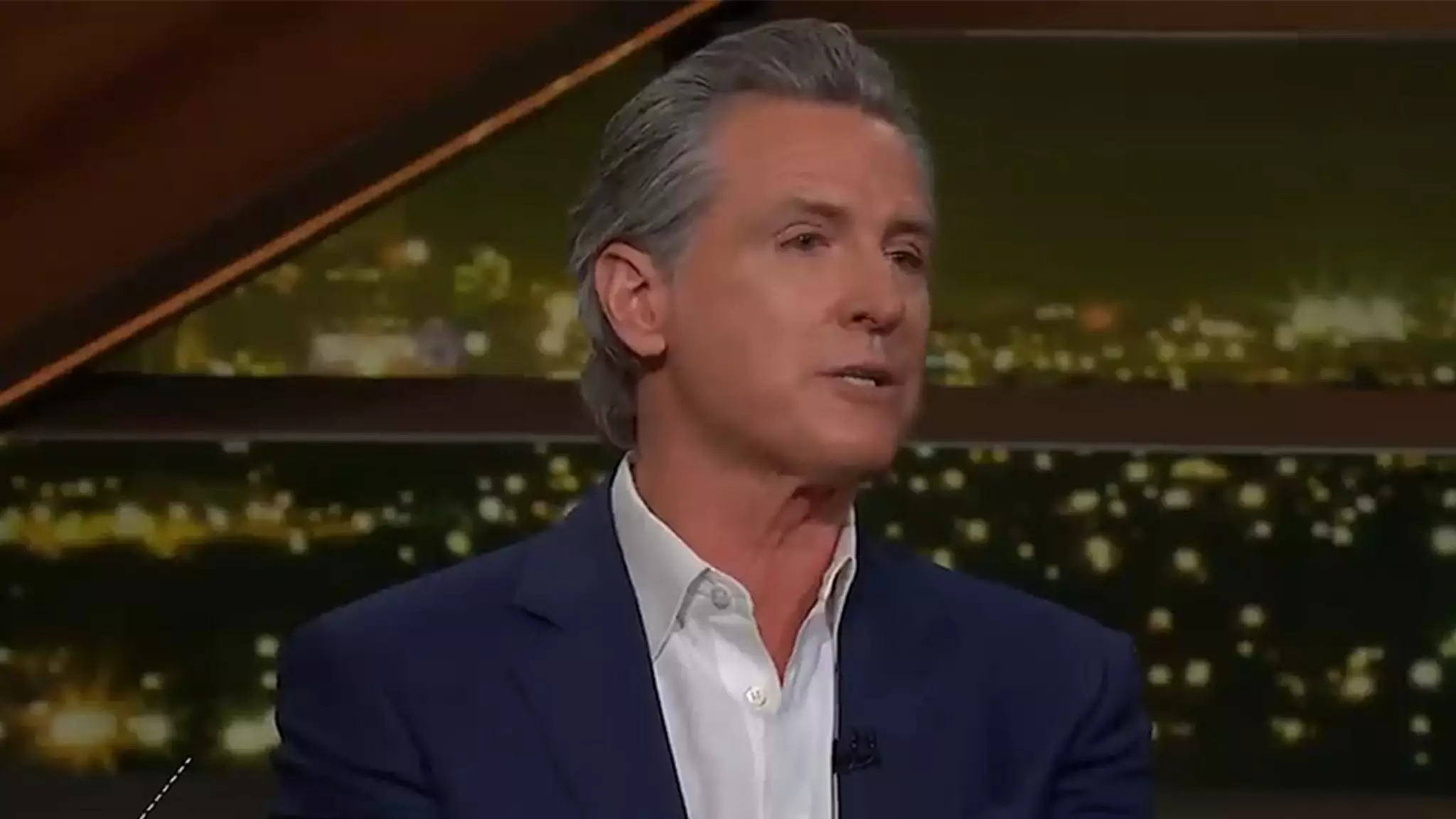In an age where the political landscape seems more polarized than ever, California Governor Gavin Newsom is making waves with his unconventional strategy of engaging with conservative figures. On his podcast, “This Is Gavin Newsom,” he has openly defended the idea of fostering dialogues with controversial right-wing personalities such as Steve Bannon and Charlie Kirk. Newsom’s premise is straightforward yet audacious: Democrats can no longer afford to maintain an echo chamber if they wish to reclaim political power. His belief that the “Democratic brand is toxic” reflects a sobering recognition of his party’s current standing in the electoral arena.
As he articulated during his conversation with Bill Maher on “Real Time,” Newsom postulates that in order to effectively counteract the Republican machine, Democrats must seek common ground with their opponents. This approach not only displays strategic foresight but also serves as a mirror to the Democratic Party, urging it to re-evaluate its messaging and outreach tactics. He challenges party members to confront the uncomfortable truth that merely opposing Republican narratives is insufficient for electoral success.
Dialogues with Dissent: A Double-Edged Sword
While Newsom’s methodology could be seen as a path toward unification, it is not without its detractors. Critics argue that by giving a platform to figures like Bannon—who are often viewed as divisive and inflammatory—he inadvertently legitimizes dangerous ideologies. This dilemma encapsulates a significant tension in contemporary politics: the need for productive discourse against the backdrop of potentially harmful rhetoric.
Bill Maher’s endorsement of Newsom’s strategy, juxtaposed with his own harsh critiques of Donald Trump’s followers, creates a paradox; can the left afford to engage with the right without conceding to extremism? Maher himself highlighted the growing cult-like behavior of Trump supporters, underscoring a complexity that Newsom must navigate carefully. To preach open dialogue while maintaining firm ideological principles is a balancing act fraught with risks.
Reimagining Political Identity in a Fractured Landscape
What makes Newsom’s initiative particularly compelling is his recognition that political identities are not static; they are shaped by discourse, experience, and most importantly, change. By opening channels of communication, he is effectively advocating for a reimagining of party identities to reflect evolving public sentiments.
Yet, he is not alone in this recognition. Figures like Joe Rogan have also begun critiquing traditional party lines, suggesting many Americans are tired of binary thinking. The question remains, however: are both crowds ready to embrace the discomfort that comes with honest political engagement?
The stakes are high; if the two major parties continue to entrench themselves in their respective ideological fortresses, they risk rendering constructive governance impossible, perhaps resembling a regime that stifles dissent, as Maher ominously hints with his North Korea analogy.
In this complex interplay of acceptance and resistance, leaders like Gavin Newsom—and those who choose to follow his lead—may successfully redefine how we engage with differing perspectives. Ultimately, the challenge lies not just in seeking dialogue but in fostering a culture where those conversations can lead to genuine understanding and transformative change.

